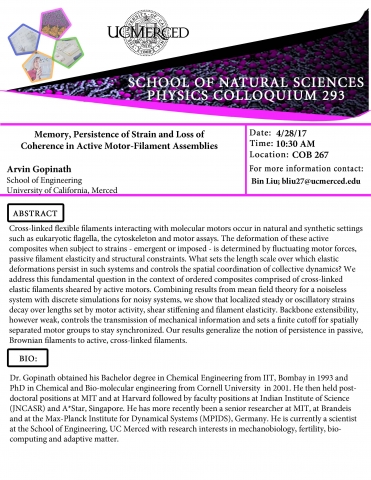Arvind Gopinath, University of California, Merced
Abstract:
Cross-linked flexible filaments interacting with molecular motors occur in natural and synthetic settings such as eukaryotic flagella, the cytoskeleton and motor assays. The deformation of these active composites when subject to strains - emergent or imposed - is determined by fluctuating motor forces, passive filament elasticity and structural constraints. What sets the length scale over which elastic deformations persist in such systems and controls the spatial coordination of collective dynamics? We address this fundamental question in the context of ordered composites comprised of cross-linked elastic filaments sheared by active motors. Combining results from mean field theory for a noiseless system with discrete simulations for noisy systems, we show that localized steady or oscillatory strains decay over lengths set by motor activity, shear stiffening and filament elasticity. Backbone extensibility, however weak, controls the transmission of mechanical information and sets a finite cutoff for spatially separated motor groups to stay synchronized. Our results generalize the notion of persistence in passive, Brownian filaments to active, cross-linked filaments.




